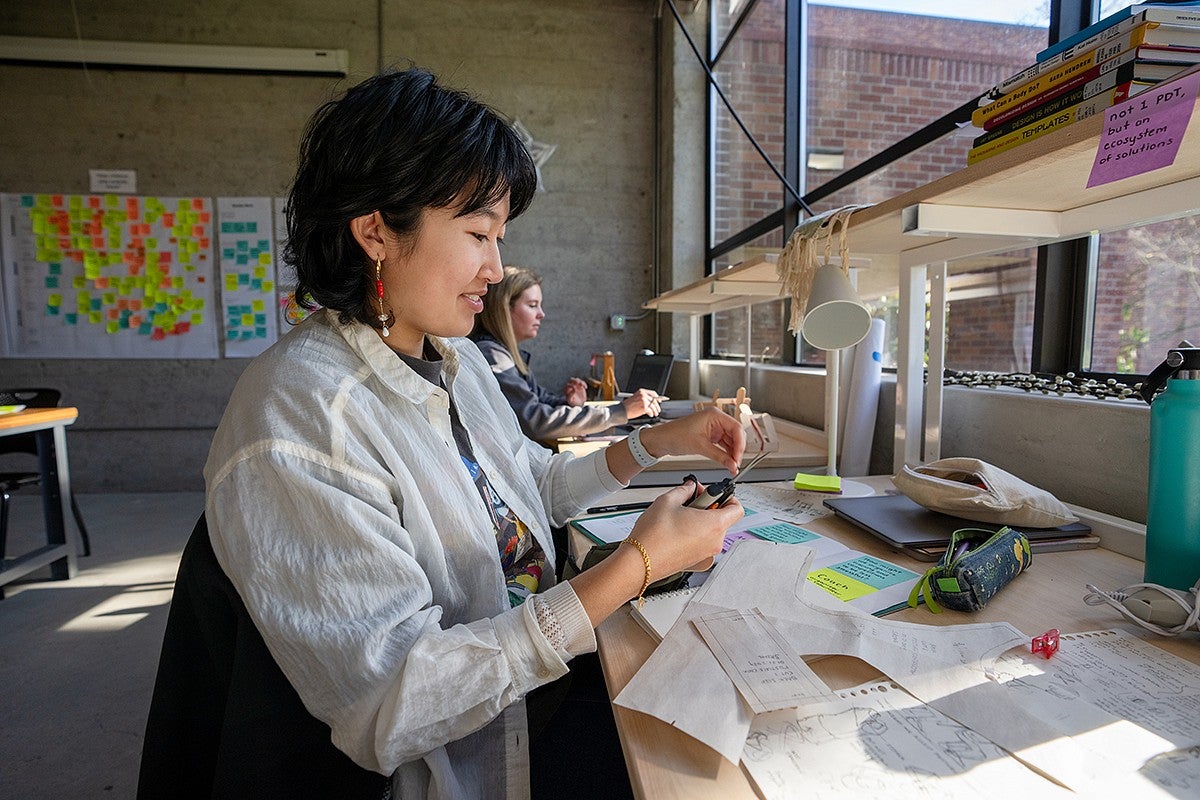
Leveling the playing field
At the final powerlifting competition for Special Olympics Multnomah County this spring, athletes looked eagerly at Audrey Saing’s bag, wondering if it contained a posture aid device she had been developing.
“I didn’t bring it today because it’s competition,” she told them. “You can’t wear this fancy thing, it’s not within the rule set yet.”
Though the class in which she made the device, “Design for Adaptive Athletes,” was ending, Saing hoped to keep working with the athletes she had come to know well.
“I don’t want it to be extractive, so it’s not just like, we drop in for a second...” says Saing, a product design graduate from the Clark Honors College. “I want to continue the partnership.”
Design is so much more impactful when the designer meets and collaborates with a real user, says Anna Koebel, Saing’s classmate and roommate. “It’s not just Audrey designing for these athletes; these athletes and Audrey are working together,” she says.
The posture aid, dubbed “Align,” recently won funding from the Oregon Innovation Challenge, so Saing can continue developing and producing the device. But she says she’s not in it for the money. “I like making things because I care about people,” Saing explains.
Saing’s instinctive caregiving shows in many ways: in the interdependency of her multigenerational family, in her role as a peer wellness advocate at the UO DuckNest, and in her habit of remembering friends’ favorite snacks and offering them at just the right time.
But more than all that, Koebel says, Saing’s signature is her commitment to justice.
“She’s always the person questioning the systems of our lives that we exist in, whether that be the design thinking systems or the societal structures,” says Koebel. “She’s always questioning how we can do better as individuals in a larger system to reduce discrimination and oppression.”
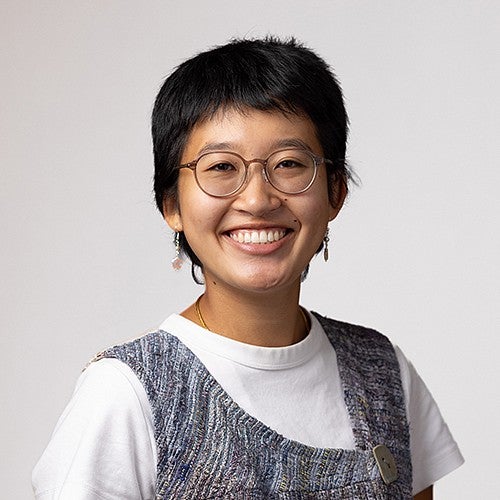
Audrey Saing
Major/minor: Major in product design, minor in global health
Hometown: Beaverton
Coffee or tea: Tea (especially genmaicha and masala chai)
Song on repeat: Lose My Focus by Raveena & UMI
Thesis title: Female-Centric Soccer Gear Informed By Biomechanics and Design Insights
Favorite experience from the HC: Connecting with lifelong friends passionate about global health, ethics, and holistic wellbeing via Melissa Graboyes' HC 101 Malaria class and Global Health Research Group.
Advice for incoming first-years: Spend time exploring and branching off of a linear academic/career path. Your unique lived experiences will lend you to be a more resourceful and resilient human being.
I’m grateful for: Community and access to fresh produce.
This summer, I can’t wait for: Weaving, berry picking, and resting amidst the trees and river water.
Next steps: Become more involved in community organizing for social justice while working in the service, industrial, and/or soft goods design industry.
Saing grew up in Beaverton, the oldest of four sisters in a Cambodian-American household. Her parents’ families immigrated to escape genocide under the Khmer Rouge, and Saing says that trauma put her parents and their siblings into survival mode and led them to choose practical, dependable careers.
“Now that we have a generation of stability, I’m challenging myself to be creative and go on a different path," she says.
Saing was attracted to the Honors College because she’d have the ability to explore majors and disciplines in the small, family-like setting she preferred, while paying affordable in-state tuition. The 30-person cohort of product design students she’s now a part of also feels like a family to Saing.
As the oldest of her siblings and close cousins, Saing took on significant caregiving and mediating duties. She often was put in the role of the “responsible one” even when older cousins were present. Her upbringing taught her that family always takes care of one another, but “that was unsustainable for a second,” says Saing. “My mental health wasn’t great by the end of high school.”
So when she came to college and was freed of that responsibility, something was missing. Saing fulfilled her need to care for others through the DuckNest, where she trained as a peer wellness advocate her sophomore year and became a team lead as a junior.
In the role, Saing led wellness walks, connected cultural groups and set up a program that encouraged students to seek out activities around campus in support of holistic health.
The role helped her find community on campus, says Saing, but even so, she sometimes lost herself in caring for others.
“When I’m having a hard time, I feel like I’m taking up too much space,” she says. “Something I’m working on is being able to accept help and support.”
Intramural sports have been another outlet for Saing in college, particularly soccer, which she played growing up. When she started to see the “unsustainable grind culture” of product design taking a toll on her classmates, she invited them all to join the team.
“We didn’t win any games,” she jokes, but it brought them together.
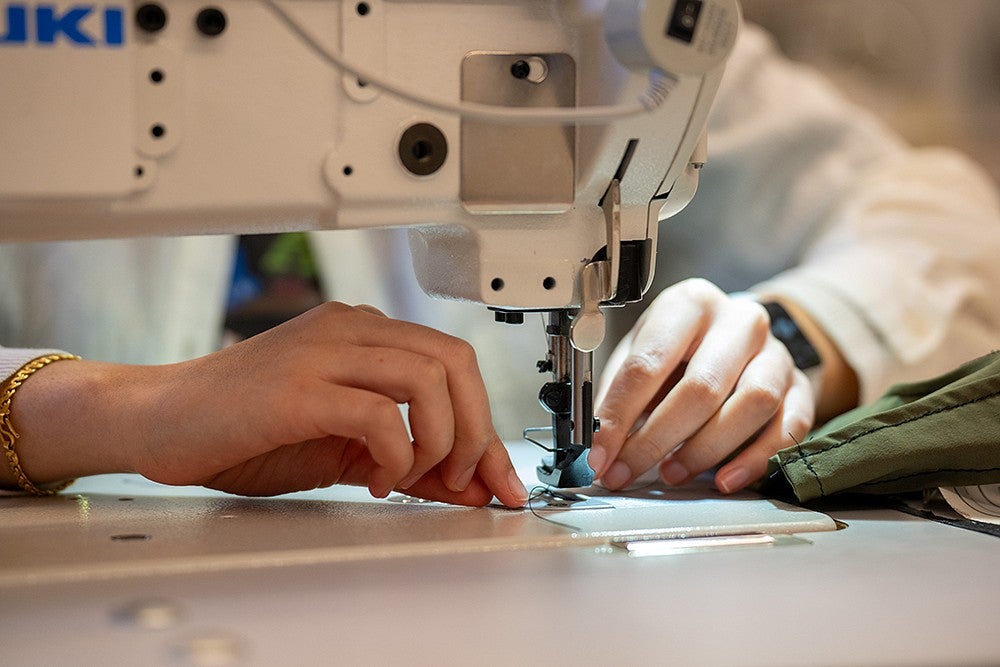
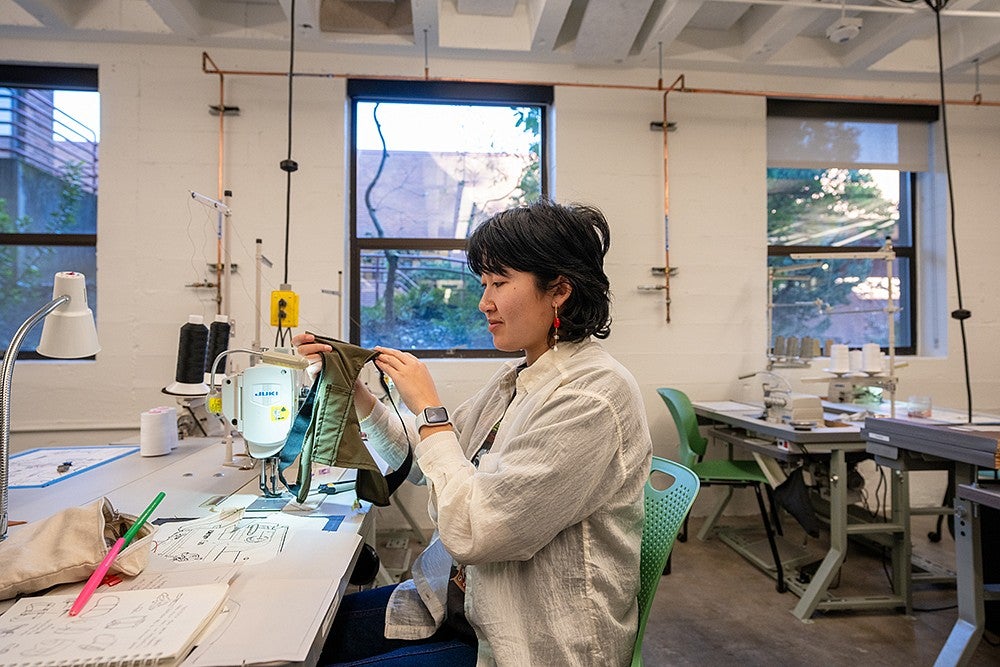
She also played intramural tennis with CHC classmate Sera Lew, another DuckNest wellness advocate who later became a roommate. Lew says Saing is an amazingly thoughtful friend, but has been learning to protect her energy.
“We both kind of took that journey in our senior year, to say no to more things, to set more boundaries and practice self-care,” Lew says. “I think she’s really grown in that area.”
Saing came into college interested in human physiology and landed in a lab at the Bowerman Sports Science Center studying plantar pressure and motion capture data from soccer athletes. She worked with a PhD student who was looking at stud length on cleats and how that could affect the likelihood of injury, such as when the traction is too much.
Saing knows too well that female players experience ACL injuries at much higher rates. She recently had surgery to repair her second ACL tear, both times from playing soccer.
The problem, she said, is sometimes gear is poorly designed for the ways women’s bodies move.
“Right now, there's a data bias in the sports product design world. The male body is the default body,” Saing says.
For her Honors College thesis, Saing took some of what she knew about anatomical differences in soccer players and how gear can better serve females and applied it to a different aspect of cleats: the insoles.
The solution is based on surveys of female athletes Saing conducted that asked about cleat preference and lifespan of insoles. Saing’s insole prototype uses foam and 3D-printed components in configurations to encourage better ankle-to-knee alignment, and hopefully, mitigate the risk of ACL tears.
Saing says she’s not totally set on the sports product design field because she feels it produces too much waste. But she was reinspired when she took the class with adaptive athletes, which was taught by instructor Rachael Rosalie Volker.
“She’s an amazing professor,” says Saing. “It brought back hope for me about this field being something that could be positive.”
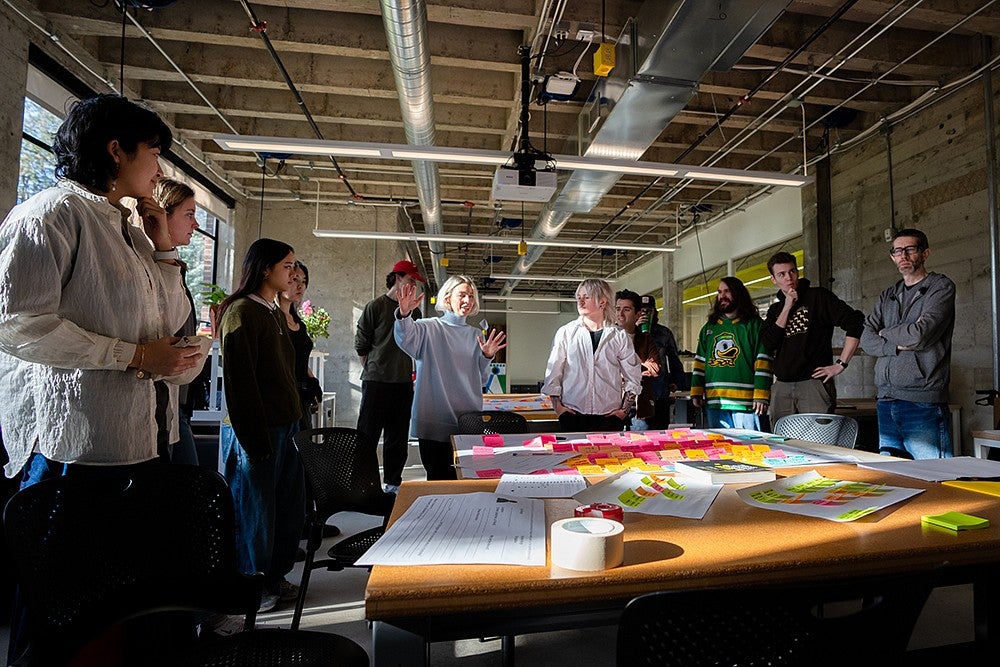
The class, which Volker has taught four times, immerses itself in a day of sport with a community of athletes, sometimes even working out with them. Then they embark on a design journey to transform the athletes’ world and their outcomes in sport.
“For people with limited mobility, access to sport isn’t just about winning; it’s about celebrating movement, connecting to community, expression, and belonging,” Volker said. “Audrey is very comfortable leaning into the community. She is empathizing with them on every level. What is their journey? How are they moving through life and what are the touchpoints through which she can improve their life?”
At the end of the design process, Volker says, Saing is able to package it all up in a way that gets the athletes excited: “For one, to have the spirit of sport, but two, just to feel seen. It’s such a powerful thing, to feel like someone cared.”
Saing’s dedication to design justice guides her pricing model for her posture support product. She wants to make it affordable to users in Special Olympics, so she’ll use a slightly higher profit margin with other user groups to allow her to subsidize the cost. That way, Saing can afford to pay herself something for making them, too. Right now, her plan is to sew each one.
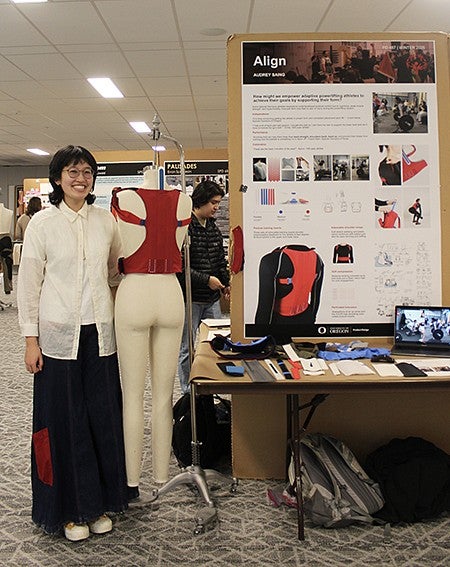
“I do need some help with that,” Saing says about her business model. “(Oregon Innovation Challenge) will hopefully provide some mentorship.”
Saing’s been applying to jobs in various design fields, including design research, but says the industry is in an uncertain time right now with materials prices fluctuating wildly due to tariffs, and it’s impacting entry-level positions. She’s glad she’ll get to keep working on the adaptive athlete project in the meantime.
Lew says Saing stands apart from other product design majors. “She thinks beyond ‘what’s going to get me the most consumers’ and rather, ‘who am I going to help the most,’ and ‘what are communities that don’t have products made for them,’ and I think it really shows her empathy and willingness to think about others before herself.”
As Saing sets out on her career path, she wants design to feel like an exchange, not a prescription. And if she’s leading the way, she wants to level with people – literally.
Sitting around a table at a meeting of the Industrial Designers Society of America chapter where she served as co-president last year, she was seated in a chair that was slightly higher than the other members’ chairs.
“I needed to find a chair that was the same height,” she recalls. “I want to be on the same level with the people that I design with, and that’s how I approach leadership, too. Everyone’s important.”

